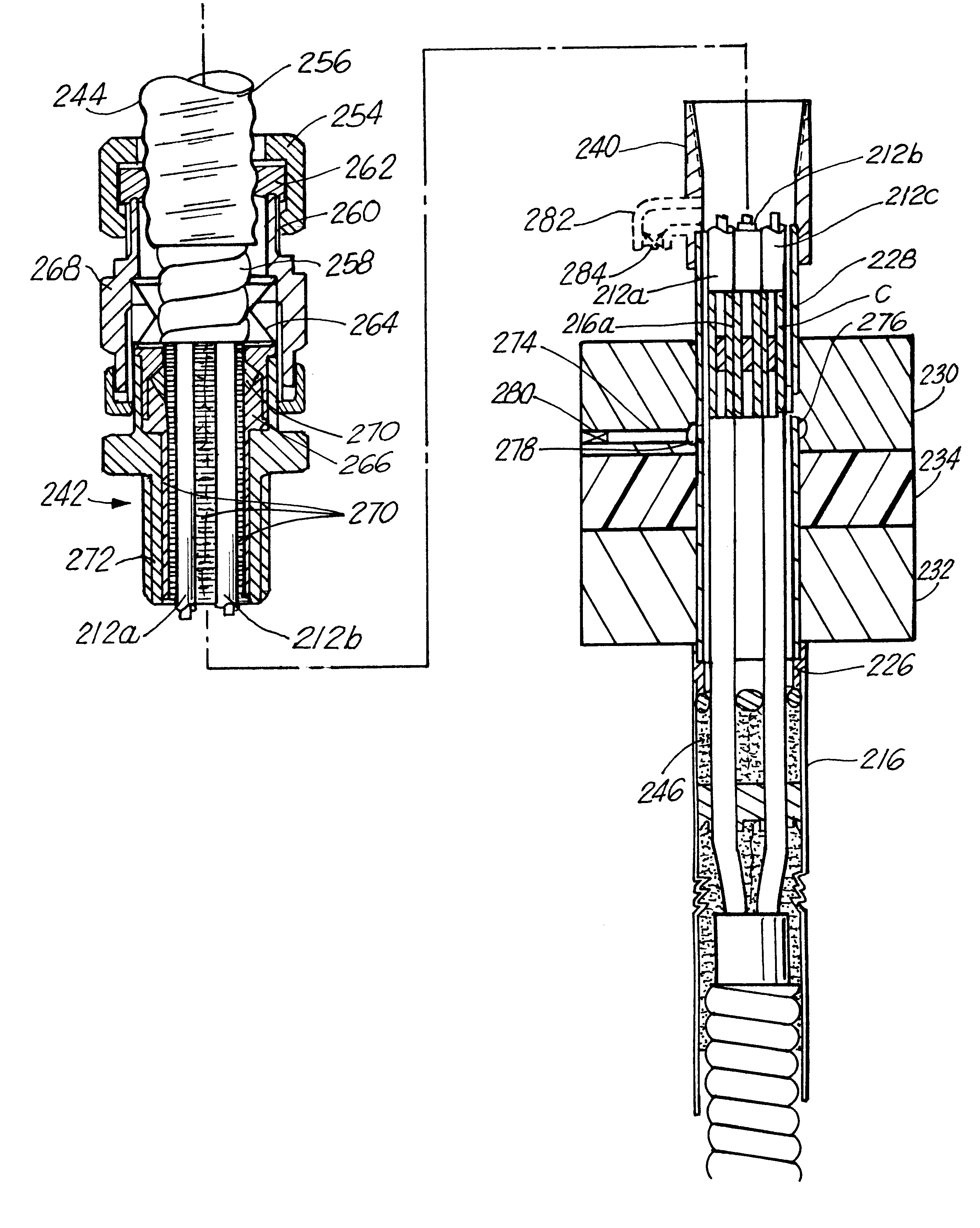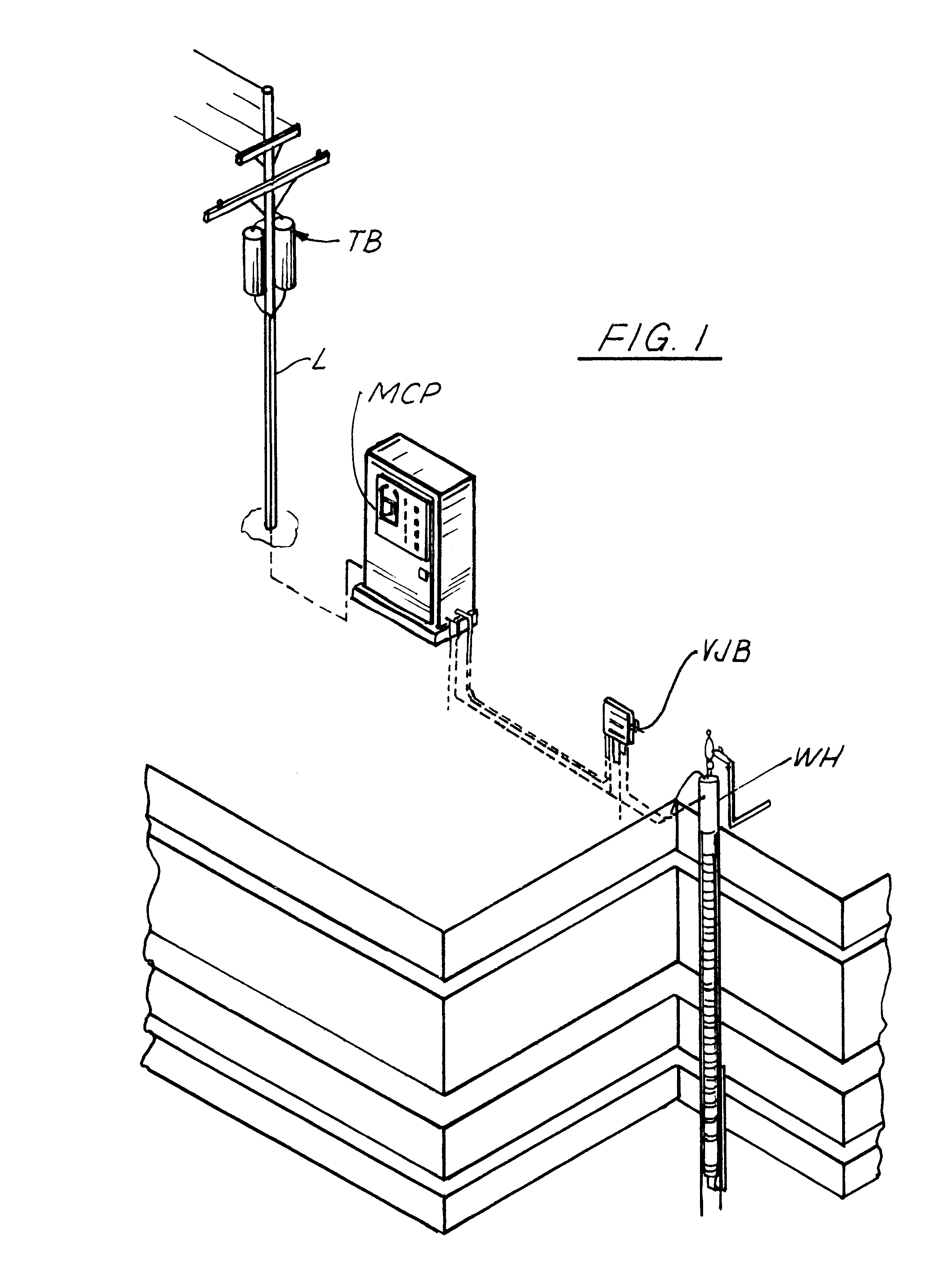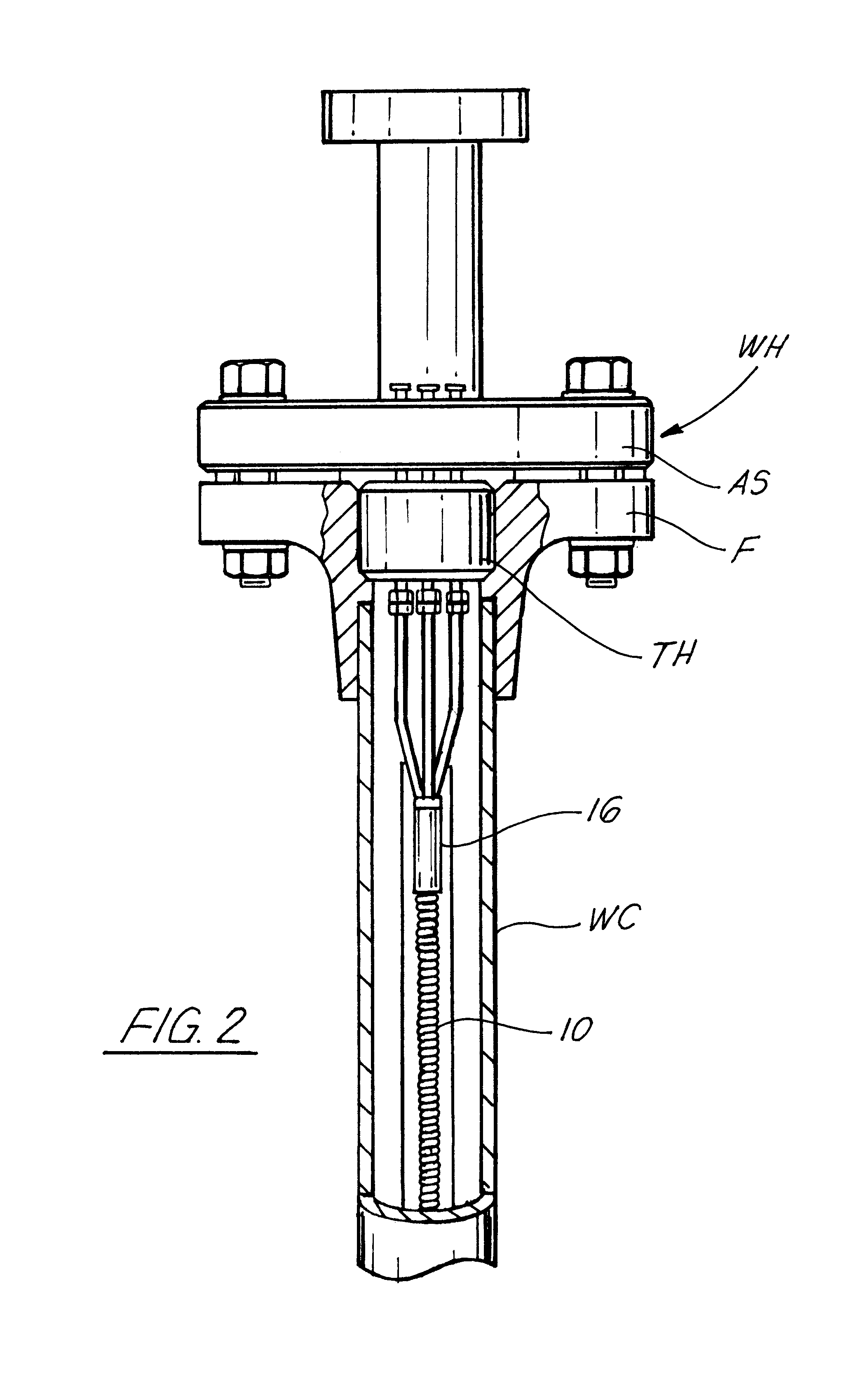Underground well electrical cable transition with seals and drain
a technology of underground wells and electrical cables, applied in the direction of cable terminations, cable casings/cabinets/drawers, electrical apparatus casings/cabinets/drawers, etc., can solve the problems of large number of parts and require a substantial amount of time to compl
- Summary
- Abstract
- Description
- Claims
- Application Information
AI Technical Summary
Benefits of technology
Problems solved by technology
Method used
Image
Examples
Embodiment Construction
The subject invention relates to a penetrator for electrical conductor cable which transmits electrical power from an above-ground remote electrical power source (not shown) to downhole electrical equipment such as submersible pumps. Penetrators which have previously been sold, such as the one shown and described in U.S. Pat. No. 5,289,882 and PCT application WO 94 / 25726, involve the formation of a splice in or below the wellhead barrier, between the conductor cable connected to the downhole equipment and the conductor cable connected to the remote power source.
The invention described in detail in U.S. patent application Ser. No. 08 / 633,244, filed Apr. 16, 1996, was directed to a different type of transition or penetrator for electrical conductor cable which eliminated the splice between the cable connected to the downhole equipment and the power source conductor cable. In other words, any break or interruption in the electrical cable from the downhole equipment was eliminated as it...
PUM
 Login to View More
Login to View More Abstract
Description
Claims
Application Information
 Login to View More
Login to View More - R&D
- Intellectual Property
- Life Sciences
- Materials
- Tech Scout
- Unparalleled Data Quality
- Higher Quality Content
- 60% Fewer Hallucinations
Browse by: Latest US Patents, China's latest patents, Technical Efficacy Thesaurus, Application Domain, Technology Topic, Popular Technical Reports.
© 2025 PatSnap. All rights reserved.Legal|Privacy policy|Modern Slavery Act Transparency Statement|Sitemap|About US| Contact US: help@patsnap.com



